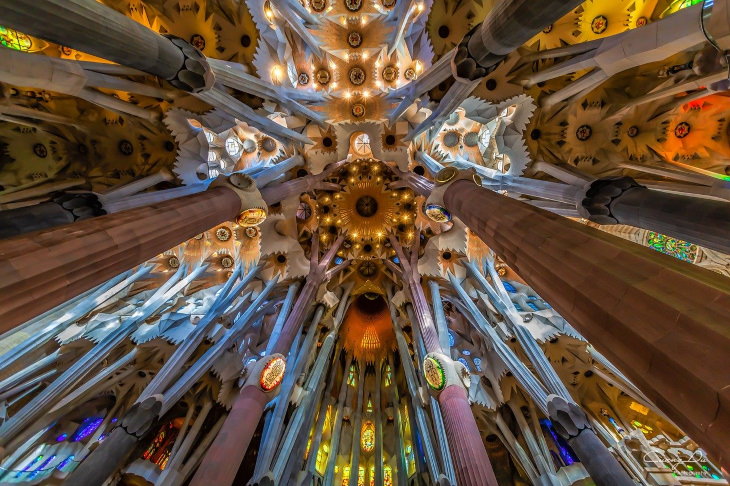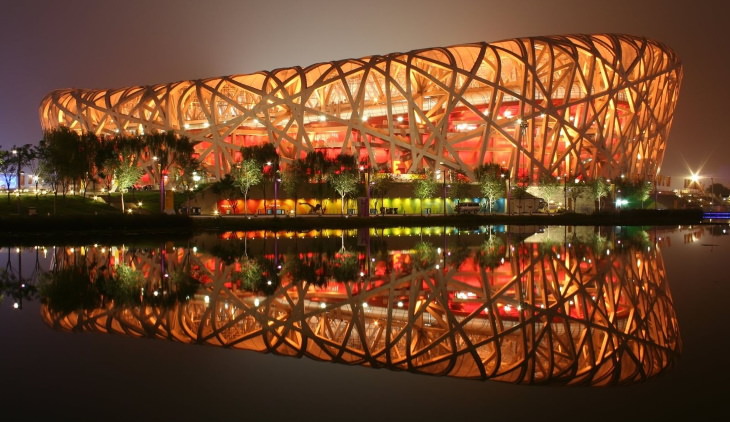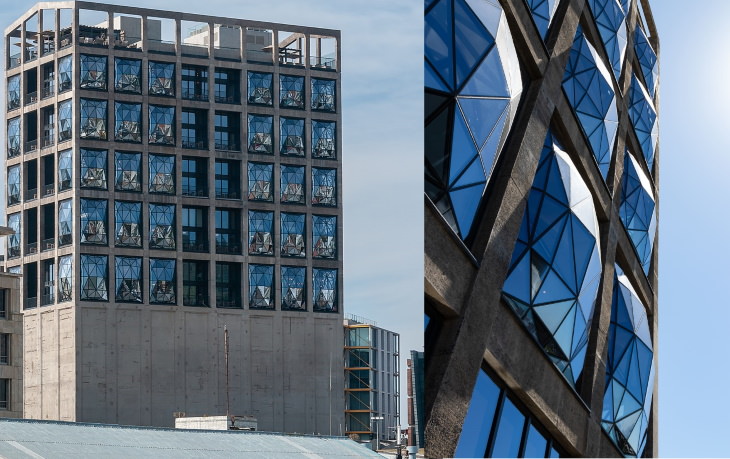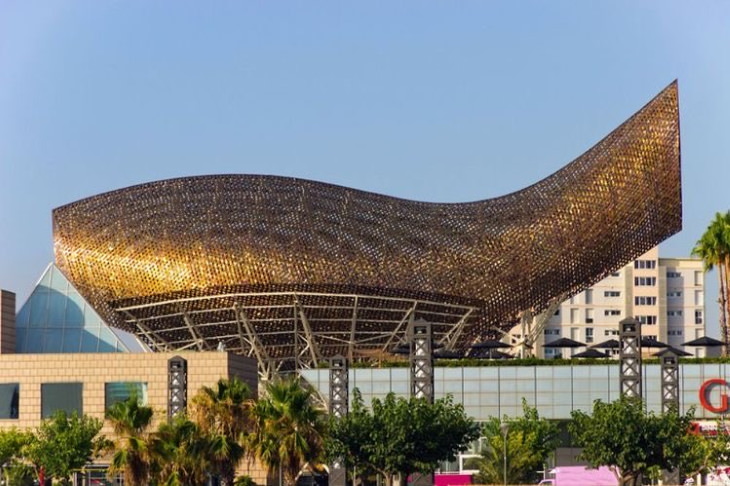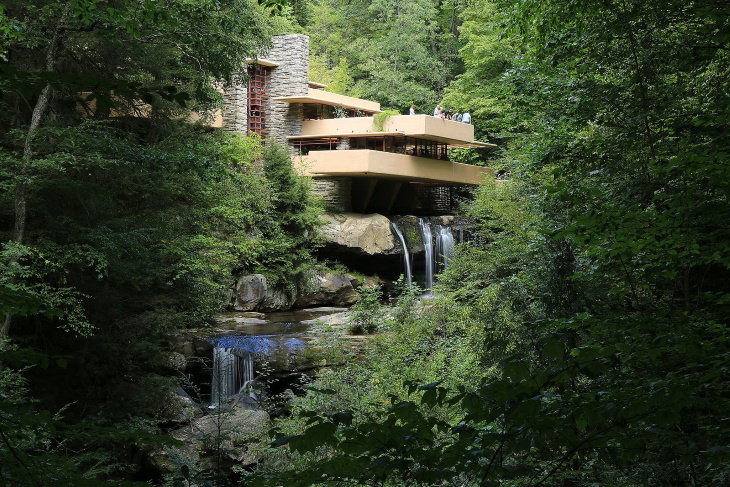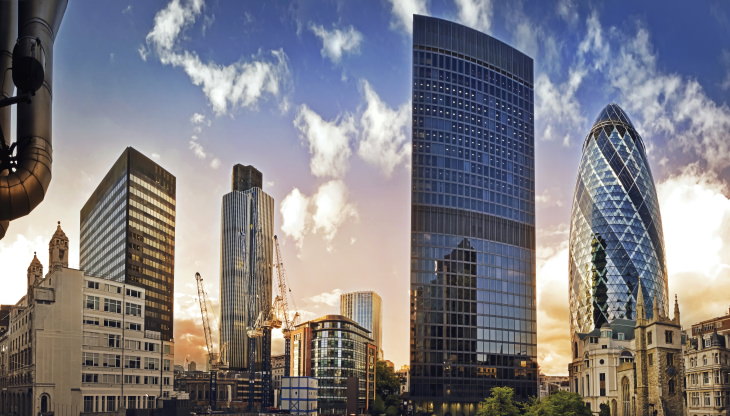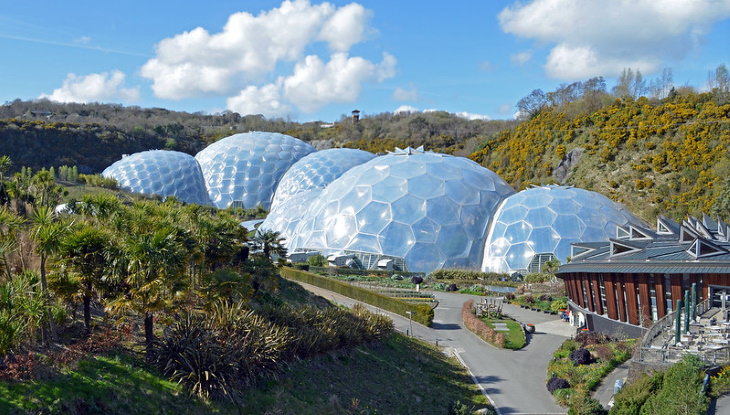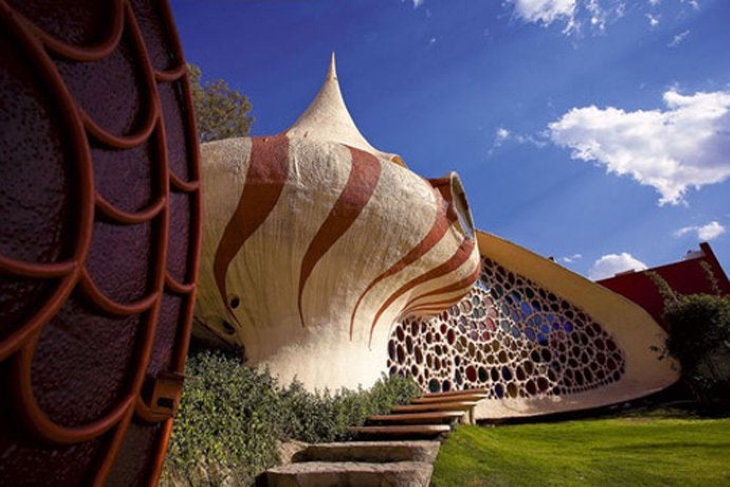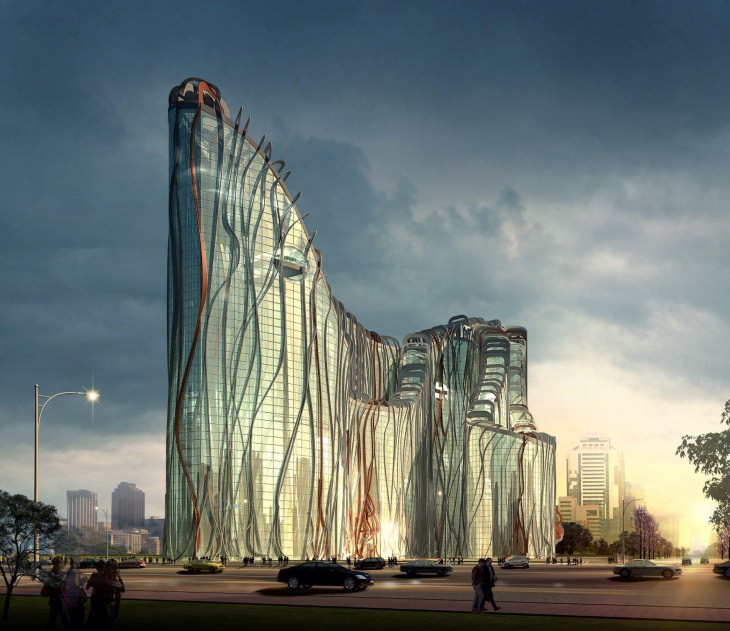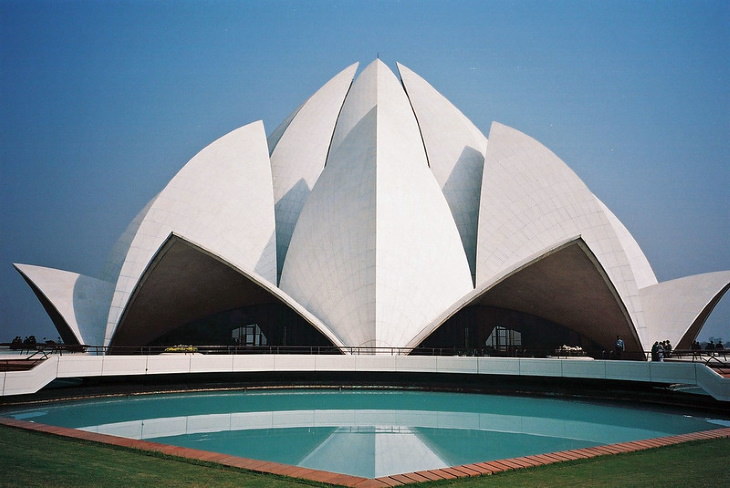1. Sagrada Familia in Barcelona, Spain, by Antoni Gaudi
The Sagrada Familia in Barcelona, Spain is the tallest church on the planet (172m or 564 ft tall), but even more importantly, it's also one of the most unusually constructed and unique buildings in the world. The architect who created this masterpiece, Antoni Gaudi, is well known for incorporating organic shapes of flowers, animals, and other objects seen in nature into his work, as exemplified by the photo of the church's interior above.
But it isn't just the resemblance to nature that makes this church special, as Gaudi also looked towards natural objects to solve structural problems. Construction of the Sagrada Familia began in the late 19th century, and it continues still, said to be finished by 2026. To this day, engineers and architects who continue Gaudi's vision follow these plans to a T because some of the calculations and building plans of Gaudi's masterpiece cannot be surpassed by modern engineering technologies.
2. Beijing National Stadium in Beijing, China by Herzog & de Meuron
This 91,000-capacity stadium was built in 2007, and it was a joint project of the Swiss architecture firm Herzog & de Meuron. For months, the architects have studied traditional Chinese ceramics and eventually came up with this design - a minimalist bowl-shaped stadium with a criss-cross patterned transparent shell that resembles a bird's nest. The name stuck, and today, the stadium is affectionately called the Bird's Nest in China.
3. Zeitz Museum of Contemporary Art Africa in Cape Town, South Africa by Heatherwick Studio
When seen from outside, the only element that reveals the very unusual architecture of this building is its honeycomb-shaped windows that look especially beehive-like at night when they are filled with a warm yellow light. This is because the now famous museum was built within a repurposed 93-year-old grain silo complex as an ode to the past.
However, it is the interior of this museum of modern art where you can really see the resemblance to a beehive, with rounded, tall abstract chambers and cathedral-like arches and narrow pathways connecting them. The museum was created by Heatherwick Studio, a prominent London-based design firm.
4. The Olympic Fish Pavilion in Barcelona, Spain by Frank Gehry
Frank Gehry, a Canadian architect who also created the famous Dancing House in Prague and several other unique projects, took a different approach when creating the Barcelona Fish sculpture. He took the image of a goldfish and simplified it by still maintaining its key characteristics to make this abstract representation of a fish.
The sculpture was created to commemorate the 1992 Summer Olympics in Barcelona. The Olympic Fish Pavilion is made of steel, concrete, metal mesh, and glass, with the metal plates being subsequently colored gold. The architects used 3D aeronautical-design software for the first time when planning this structure.
5. Fallingwater in Mill Run, Pennsylvania, by Frank Lloyd Wright
Designed and built in 1935 over a waterfall on Bear Run in the Mill Run, Pennsylvania, this magnificent home was created by iconic architect Frank Lloyd Wright for the Kauffman family, the owners of Kauffmann's Department Store. Today, this building is considered the ultimate display of organic architecture, a movement that aimed to find harmony between nature and architecture.
In the 1960s, the building was turned into National Historic Landmark and later also a UNESCO World Heritage Site. The luxurious Fallingwater has been called “the best all-time work of American architecture”. For a closer look at Wright's architecture, click the following link: The Uniquely Brilliant Architecture of Frank Lloyd Wright!
6. The Gherkin in London, UK, by Foster + Partners
The building to the far right in the picture above is the famous Gherkin building in London, the official name of which is the 30 St Mary Axe building. While the Brits consider that it resembles a cucumber more than anything else, hence the name, the actual building was inspired by a very different natural object - a Venus’ flower basket sea sponge.
Like the sea sponge, which directs seawater to flow through its body, the Gherkin uses a similar natural air ventilation system that allows it to use up a lot less energy than similar skyscrapers. The Gherkin was completed in 2004 and it's 180m (590ft) tall, becoming one of the first environmentally progressive buildings in the British capital.
7. The Eden Project
The Eden Project is a one-of-a-kind travel destination nestled in Cornwall, UK. Open since 2001, the park houses an impressive collection of exotic tropical plants and aims to help people learn about the relationship between nature, resources, and civilization, and focuses on sustainability.
Some of the most unique elements of this garden are the linked domes that were inspired by the way bubbles stick together and the education center at the right that resemble the spiral patterns of pinecones, shells, and sunflowers. The project was initiated by Tim Smit, designed by architect Nicholas Grimshaw, and engineered by Anthony Hunt and Associates.
8. Kunsthaus in Graz, Austria by Peter Cook and Colin Fournier
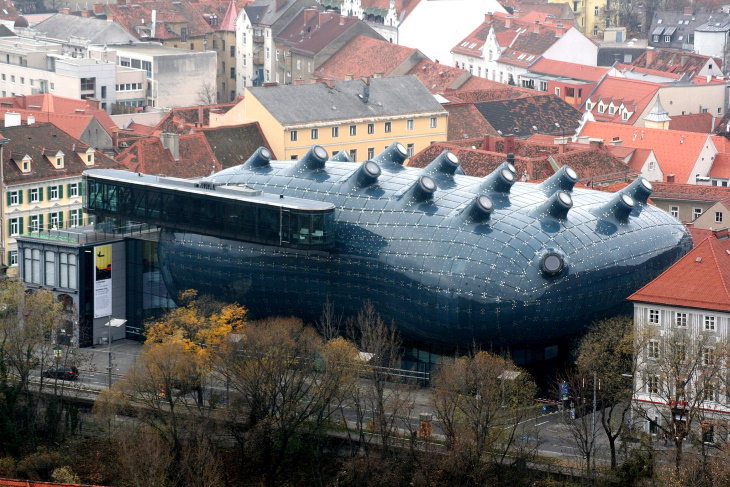
Frequently compared to a strange underwater creature, a zeppelin, or an amoeba, the Kunsthaus in Graz is a modern art gallery that showcases art from the 1960s and onwards. Deliberately constructed to be weird and provocative, the building was completed in 2003. The glass Kunsthaus building also flickers with fluorescent lights at night, and among the locals, the strange-looking building earned the adorable name the Friendly Alien.
9. The Nautilus House in Mexico by Javier Senosiain
Inspired by the groundbreaking works of Gaudi and Wright, Javier Senosiain, a Mexican architect started experimenting with organic architecture and created several buildings that resemble living creatures like sharks, snakes, and even peanuts, a style he calls "bio-architecture".
The architect's most famous work, however, is the Nautilus House, designed and built during 2006-2007. Looking like a huge shell both from the outside and inside, this shell-shaped house is fully fitted with all the usual rooms and amenities. The interior is scattered with patches of garden featuring flowers and other greenery, following the architect's vision that people should live together with and in harmony with nature, even if you're a city dweller.
10. An Emerging Cryptocurrency City in Senegal
This massive project started in 2013 and it hasn't been completed just yet, but given that it must be one of the largest biomimicry projects ever, we simply had to include it on this list. The city is being built in Senegal and carries the name Diamniadio. Promised to become the first smart city run by cryptocurrency, the new city is supposed to become the solution for the overcrowding issues in the capital city, Dakar.
The city will span across 4,000 acres and be complete with both affordable and luxury housing, an industrial complex, government facilities, and even a university. The architecture of the buildings is heavily inspired by the plant life of Senegal, namely the iconic baobab tree and local algae species. Needless to say, the list of visitors who dream of seeing the curious city when it's planned to open in 2035 is piling up!
11. Lotus Temple in New Delhi, India by Fariborz Sahba
There are several buildings around the world that aim to mimic the beauty of the lotus flower, and the Bahai Lotus Temple in New Dehli is certainly one of the most prominent ones. The architect who conceived of the magnificent structure, Fariborz Sahba, envisioned the bloom as 27 marble 'petals' arranged in threes.
The white marble for the construction of the temple was taken all the way from a mountain in Greece, the very same marble used to carve out the Parthenon in Athens. The temple has been open since 1986, and it is one of the most visited and acclaimed modern buildings today.

